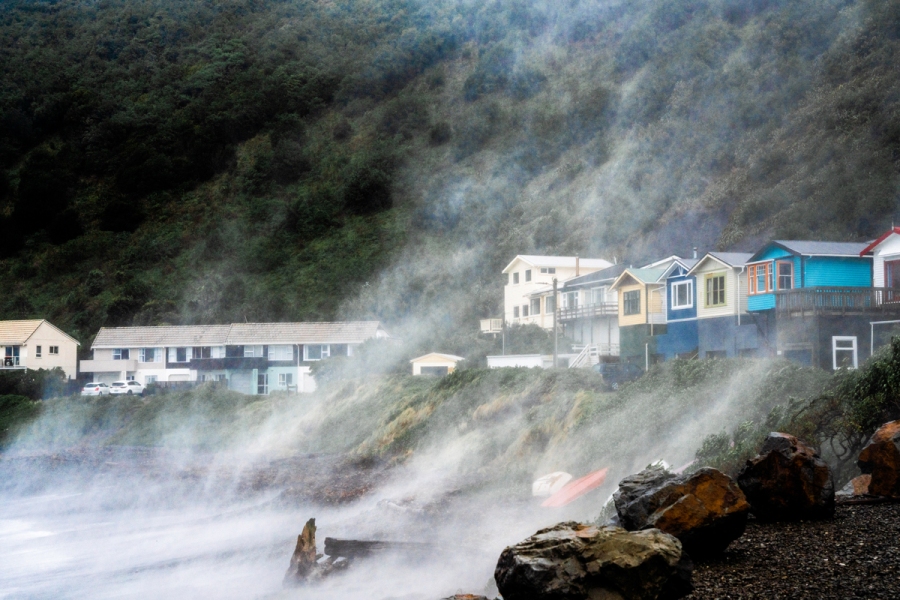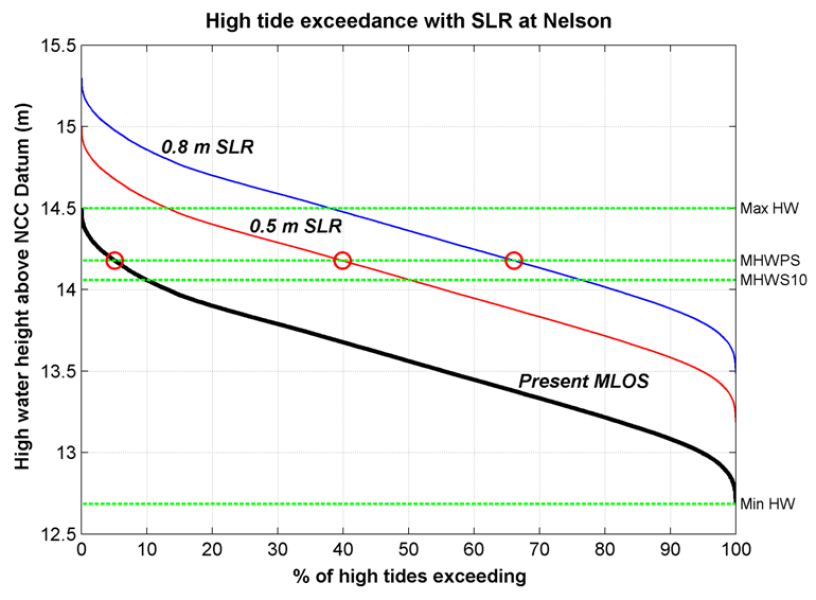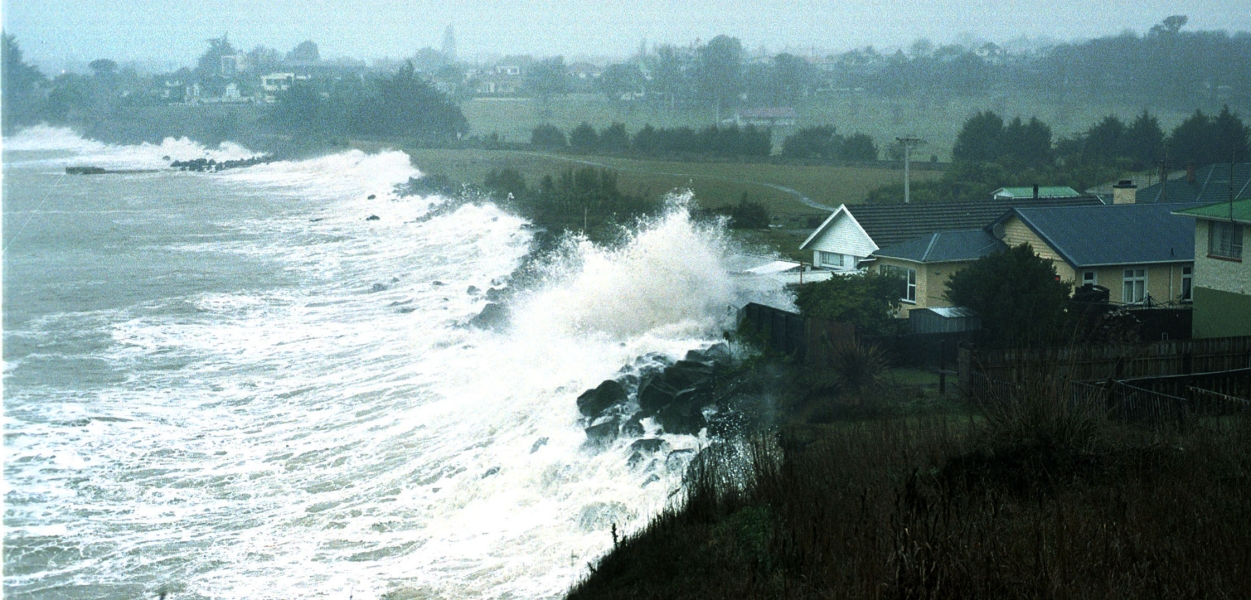New Zealand has low-lying coastal areas that are vulnerable to inundation (flooding) by the sea, especially during storms.
Coastal inundation is particularly likely when high tides, storm surge and/or large waves occur at the same time. At these times, areas where rivers or creeks meet the sea are more vulnerable because high seas can cause the rivers to back up inland. Sea level is also rising and future storms may be more intense, so areas that are inundated only occasionally now are likely to be inundated much more frequently in future.
Causes of coastal inundation
Perigean spring tides: also called "king" tides, occur around full or new moon, when the moon is also closest in its monthly orbit around Earth (at its perigee). Small to moderate storm surge or waves can combine with these higher perigean spring tides to cause coastal flooding
Coastal storm surge occurs when low-pressure weather systems affect the coast and continental shelf. Sea level relaxes (rises) in response to falling barometric pressure, and strong winds can pile water up against the coast. These phenomena both contribute to storm surge, which can coincide with high tide to produce higher than normal sea levels known as a storm tide.
Wave set-up occurs when breaking waves cause the average sea level to rise in the surf zone, which further contributes to coastal inundation when combined with a storm tide.
Mean sea level variations add further to the mix due to seasonal, El Niño / La Niña and multi-decade cycles that can increase the sea level in any month by up to 0.15 to 0.25 m around New Zealand. At even longer timescales, the long-term average sea level is rising due to climate change, and also needs to be factored into risk assessments and land-use planning for coastal inundation.
Potential consequences of coastal inundation
- Storm tides may cause seawater inundation.
- Large waves can create many hazards besides overtopping and inundation including rip currents, beach erosion, hazardous driving conditions and structural damage.
- Stormwater and drainage networks overwhelmed.
- Higher salinity water up rivers and streams can affect potable water supplies.
- Pasture damage for up to a year from salt burn.
- Sea-level rise will mean more frequent exceedances of coastal inundation and wave damage.
Notable coastal inundation events around New Zealand
- On 14 July 1995 a small-scale high intensity low-pressure storm generated a large storm surge in the Firth of Thames that coincided with a high perigean-spring tide. The resulting storm tide flooded extensive areas of low-lying coastal land around Thames and the suburb of Moanataiari.
- Ex-tropical cyclone Giselle crossed New Zealand on 9–10 April 1968. It generated one of the largest recorded storm surges in Tauranga Harbour of 0.88 m, and caused severe sea conditions in Wellington including 10–12 m high waves, which contributedlead to the sinking of the interisland ferry TEV Wahine with the loss of 51 lives.



